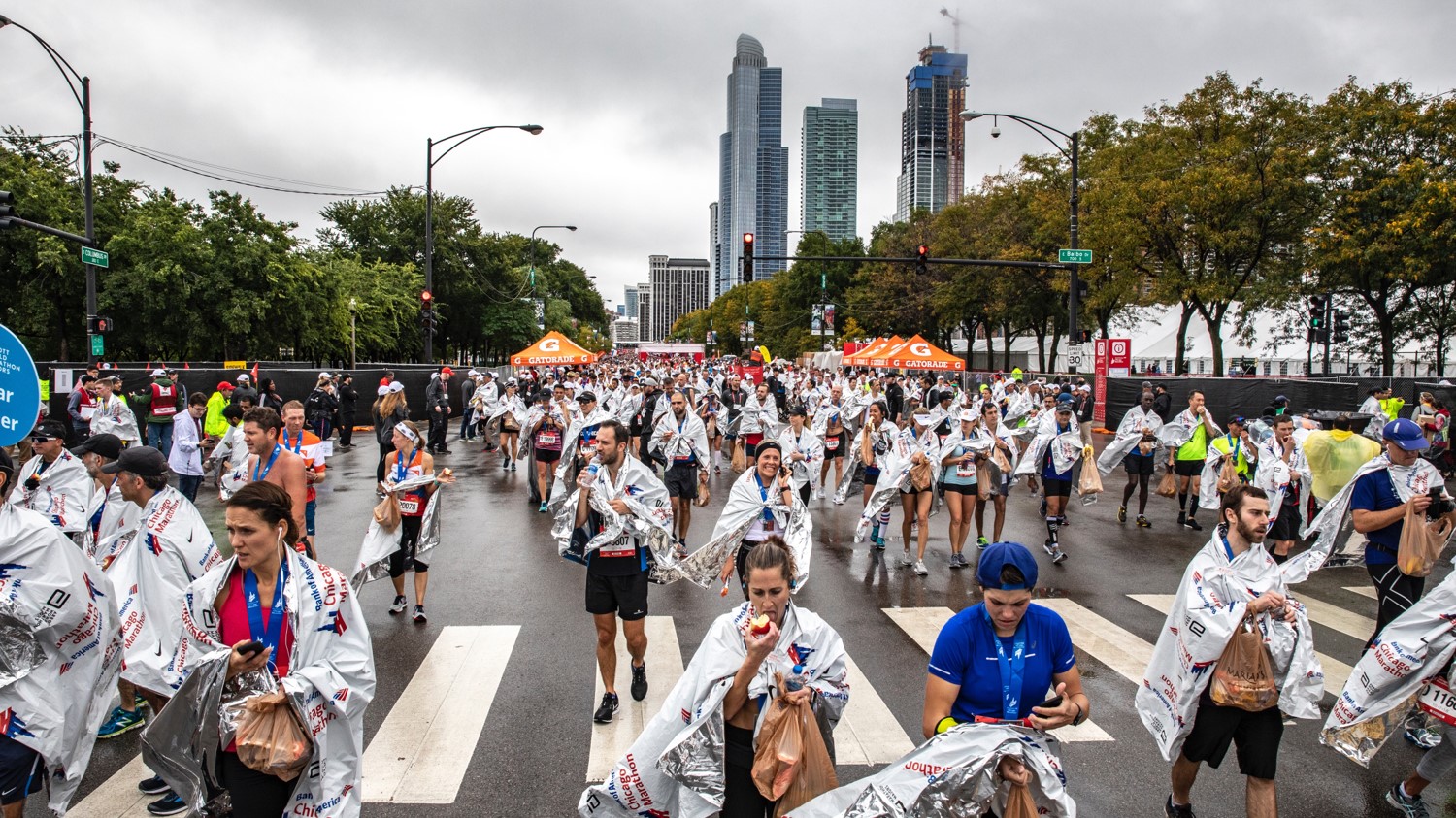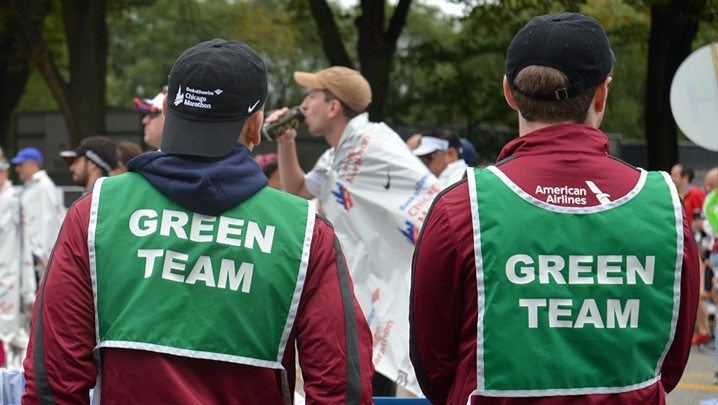Sustainability in Events: Where to start?!
By Sophie Hamdorf, Brand Visionary | Register Now
It may be a stretch… But... remember back to late 2019 when we told you we were going to the World Mass Participation Conference in Singapore? Hmmm… Vaguely you say but that was bloody ages ago - before the fires, dust and smoke clouds, coronavirus, Brad Pitt’s Oscar Win - yep, a lot has already happened in 2020!
But, we promised to share our learnings and insights and boy there were plenty! Above all, there were several recurring themes - data (big and small), engagement, sustainability, sustainability, sustainability, AI and facial recognition tech. . . Oh and did we mention sustainability?!
So yeah sustainability was a biggie. And despite the position of our current government - sustainability and reducing, reusing and recycling has never been more important than today - for the health of our country, our globe and scarily the future existence of this planet. Recent events in Australia are further testament to that (in our opinion).
(If for some wild reason you’re still not convinced it’s worth reading this very damning opinion piece “Australia Is Committing Climate Suicide” by Richard Flanagan, published in The New York Times during the height of the fires in January).
Politics aside, there has never been a more important time to review the way that we all implement sustainable practices in our workplace. This also includes the practices of our partners, clients and suppliers.
If the event that you are delivering, providing service to or are aligned with does not have a sustainability standard that it is working towards; chances are this event is not going to survive the next frontier of acceptable and green workplace practices. These best practices are certainly not going anywhere and at MPW there was a lot of discussion around setting industry standards for mass participation events.
It’s not all doom and gloom though and we were really fortunate at WMP in Singapore to catch up with Mike Nishi, Executive Vice President of Chicago Event Management, producer of the Bank of America Chicago Marathon who gave a great presentation on their blueprint for creating a sustainability program for events that is also commercially viable.
Post conference we have connected with Mike and Cat Morris, (Manager, Sustainability) at Chicago Event Management and they have generously armed us with so much great information and best practices to share with our clients!
As far as examples go the Bank of America Chicago Marathon is pretty much the ultimate benchmark with their journey beginning back in 2010 (yes ten years ago!). In 2016 they were awarded “Evergreen Status” from the Council for Responsible Sport - and last year they were also an early signatory on the UN’s “Sports for Climate Action Initiative”... Safe to say we’re in good company here gang!
So… Where to even start?
Well like most new ideas, these things take time. But they don’t necessarily need to take a huge budget. Above all, you need to decide as an organisation what standards are the most important for you to collectively work towards to improve your environmental and social impact.
Chicago Event Management utilise the following standards as set by the Council for Responsible Sport to influence their event decision making for the Bank of America Chicago Marathon. Beneath each standard are examples of innovative measures CEM have implemented over the course of their journey. (Don’t forget this has been a 10 year journey too folks).
Planning and communications: Benchmarking & Measuring
- Venue selection and access
- Course design that minimises travel times to start line and public transport friendly locations
- Zero waste aid stations
- Sustainability expo within the event village, with hints and tips that can be taken back home to better your own community
Procurement: Vendor Sustainable Purchasing Options
- Race materials are provided digitally
- Event app in lieu of printed material
- Working with local business to source sustainably attributed products
- Participants shirts are made from 100% recycled polyester
- All communication with participants, event staff and volunteers is digital
- Food vendors must adhere to sustainable guidelines and utilise compostable materials
Resource Management: Product Distribution & Post Event
- Zero waste stations and Green Team Volunteers to divert recyclable and compostable materials from landfill
- Heatsheet blankets are collected and processed into composite wood boards which are then used to create benches in local community gardens - what a legacy!
- Discarded clothing is donated to Illinois AmVets
- Participant bags are reusable
- Unused food and water a donated to the local Food Depository
- Post event, CEM calculate their carbon footprint and purchase carbon offset to reduce the overall event impact

Access & equity: Athletes with Disabilities, Non Gender Bias
- Guide runners are provided to athletes that request additional assistance
- Gender neutral changing facilities are provided
- The event complies with ADA standard to ensure it is as accessible as possible
- The event partners with the University of Illinois Urbana-Champaign wheelchair team, to deliver mentorship and inspiration for children living with permanent disabilities
- Event participant guide is translated into 8 different languages
- Visually impaired athletes receive a braille medal when they cross the finish line
Community Legacy: How we Connect with and Give Back to Communities
- Runners and spectators support local economy over race weekend by visiting and shopping at local businesses
- A large proportion of runners make their race more impactful by running for causes that they are passionate about
- All participants, volunteers and event staff get access to an instructional “Hands-Only” CPR video
This might feel like a lot, but you can start simply by creating a “blueprint” that incorporates sustainable initiatives similar to these above and engage your event stakeholders to join you on the journey of creating a more socially responsible event.

1. Build a communication strategy to support education and awareness of your sustainability program.
This really is the most important place to start, if you can’t back up your sustainability intentions with measurable objectives, strategy, tactics and execution plan then you have nothing to keep you accountable. Not to mention an initial starting point to benchmark and measure your progress from.
2. Work with vendors to procure sustainable materials and create sustainable purchasing opportunities.
But be sure to take your time on this, do your homework and consider not just the materials themselves but where they are coming from and how they are being produced - don’t negate the environmental benefit of a sustainable merchandise item if it needs to be freighted from a far off place. Consider the full extent of the fulfillment process required from production through to delivery.
3. Collaborate with Partners/Sponsors
Particularly if there is an initiative that you might need some additional investment to underwrite - find a sponsor or partner that shares your vision and collaborate with them to deliver something world class!
We saw another great presentation by The Music Run team at MPW who are now Malaysia’s first Carbon Neutral Mass Participation event - they leveraged multiple partner relationships to revolutionise water distribution, eradicating single use plastic water bottles.
4. Collaborate with Community Partners: organizations, schools/universities
It’s ok to go beyond your immediate industry here and think outside of the box of community partners that may be willing to support your event. Example - the Bank of America Chicago Marathon each year donate all start-line leftover clothing items to the Illinois AmVets - this is a win win for both socially and environmentally.
5. Encourage participants, volunteers, etc. to join your sustainability efforts and be a force for positive change.
Not only will this afford your event a much bigger pool of champions and supporters but the greater ownership over green initiatives that you can inspire amongst your event audience the better. Each year the Chicago Marathon even goes as far as recognising exemplary Volunteers with a range of special awards for integral contributions for further engagement and long-term connection to the event.
Where to from here?
The key things we think you need to be thinking about to stay ahead of the game as event organisers in Australia and New Zealand are:
- If you have not yet considered this before, start thinking about what standards both socially and environmentally are important to you and your organisation
- Put together a 2-3 year plan of where you hope to get too - even if you only set goals to achieve and initiatives to roll out for the next season
- Never forget that even the smallest change is a step in the right direction - even if it’s simply educating your internal staff to make better choices.
Finally - if you take don't anything else away from this, be brave and be bold! It may not be how things have been done in the past, but we all need to find more sustainable and innovative approaches to event management before it’s too late.

